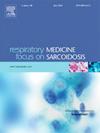早期人白蛋白输注与重症监护病房急性呼吸衰竭和低白蛋白血症患者28天死亡率相关:一项对MIMIC-IV数据库的回顾性研究
IF 3.1
3区 医学
Q2 CARDIAC & CARDIOVASCULAR SYSTEMS
引用次数: 0
摘要
背景:探讨重症监护病房(ICU)急性呼吸衰竭患者不同时间输注人白蛋白与死亡率的关系。方法本队列研究使用重症监护医学信息市场(MIMIC-IV 2.0)数据库的数据。不考虑剂量和胶体渗透压,将患者分为早期人白蛋白输注组(ICU入院后72 h内输注)和晚期人白蛋白输注组(ICU入院后72 h以上输注)。测量28天死亡率和独立死亡危险因素。结果共纳入1118例急性呼吸衰竭伴低白蛋白血症患者,其中早期白蛋白输注组471例,晚期白蛋白输注组647例。经PSM治疗后,每组451例。Kaplan-Meier分析显示,早期白蛋白输注组28天死亡率显著高于晚期白蛋白输注组。此外,白蛋白水平分层分析显示,白蛋白水平低于30 g/L的患者,早期输注组28天死亡率显著高于晚期输注组。结论ICU早期输注人白蛋白的急性呼吸衰竭患者28天死亡率高于晚期输注人白蛋白的患者。早期白蛋白输注与ICU急性呼吸衰竭患者生存率的提高无关。本文章由计算机程序翻译,如有差异,请以英文原文为准。
Early human albumin infusion was associated with 28-day mortality in patients with acute respiratory failure and hypoalbuminaemia in the intensive care unit: a retrospective study of the MIMIC-IV database
Background
To investigate the relationship between different timing of human albumin infusion and mortality in patients with acute respiratory failure in an Intensive Care Unit (ICU).
Methods
This cohort study utilized data from the Medical Information Mart for Intensive Care (MIMIC-IV 2.0) database. Patients were categorized into two groups, early human albumin infusion (infusion within 72 h after ICU admission) and late human albumin infusion (infusion more than 72 h after ICU admission), irrespective of dosage or colloid osmotic pressure. 28-day mortality and independent risk factors of mortality were measured.
Results
A total of 1118 patients with acute respiratory failure and hypoalbuminaemia were included in the analysis, with 471 patients in the early albumin infusion group and 647 patients in the late albumin infusion group. After PSM, 451 patients were included in each group. Kaplan–Meier analysis revealed that 28-day mortality was statistically significantly higher in the early albumin infusion group compared to the late albumin infusion group. Additionally, stratified analysis by albumin levels showed that 28-day mortality was statistically significantly higher in the early infusion group than in the late infusion group for patients with albumin levels less than 30 g/L.
Conclusion
The 28-day mortality of patients with acute respiratory failure who received early human albumin infusion in the ICU was higher than that of patients who received late human albumin infusion. Early albumin infusion was not associated with an improvement in the survival rate among patients with acute respiratory failure in the ICU.
求助全文
通过发布文献求助,成功后即可免费获取论文全文。
去求助
来源期刊

Respiratory medicine
医学-呼吸系统
CiteScore
7.50
自引率
0.00%
发文量
199
审稿时长
38 days
期刊介绍:
Respiratory Medicine is an internationally-renowned journal devoted to the rapid publication of clinically-relevant respiratory medicine research. It combines cutting-edge original research with state-of-the-art reviews dealing with all aspects of respiratory diseases and therapeutic interventions. Topics include adult and paediatric medicine, epidemiology, immunology and cell biology, physiology, occupational disorders, and the role of allergens and pollutants.
Respiratory Medicine is increasingly the journal of choice for publication of phased trial work, commenting on effectiveness, dosage and methods of action.
 求助内容:
求助内容: 应助结果提醒方式:
应助结果提醒方式:


